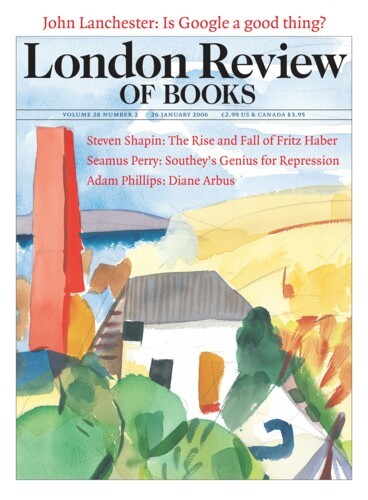At the Amsterdam: A Wakefull and Civill Drink
Steven Shapin, 20 April 2006
I went to a coffee house this morning. I had a ‘grande’ latte. It cost me $3.20. Sometimes I carry the coffee with me to work in a cardboard cup; this time I sat in the coffee house and drank it while reading the newspaper. I went by myself and did not have a conversation with any of the other customers – several of whom I vaguely recognised but most of whom were strangers





